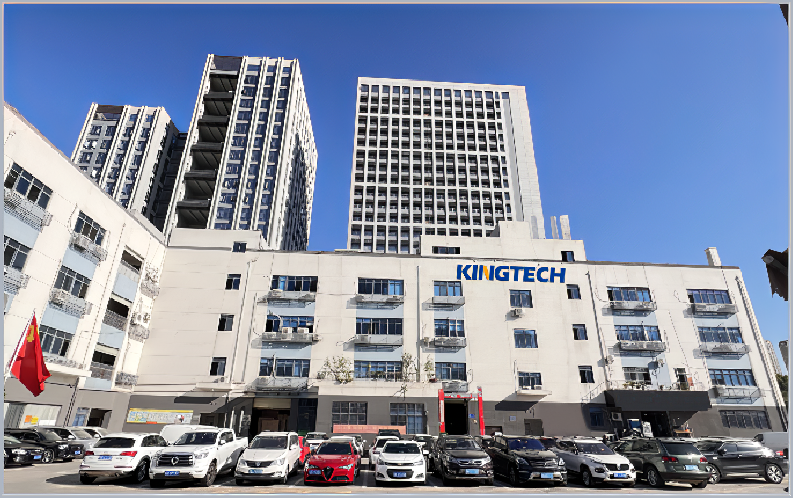IPS Vs TFT LCD Display
Choosing the right screen can be a game changer for business in this evolving era of display technology. Whether you are in manufacturing, design, or any other sector that relies on high quality visual outputs, understanding the IPS vs TFT is important. In this article, we’re going to discuss the key differences, pros and cons of both of these display types.
Let’s begin and have a look at them in detail.
IPS Vs TFT: 3 Key Differences
Image Quality
IPS LCDs offer great image quality by aligning liquid crystals parallel to the screen. You will not observe any color distortion, regardless of your viewing angle. This characteristic is beneficial where screens are viewed from different angles such as in public displays. As IPS technology is richer in colors, it is a preferred choice for professionals in fields like photography, video graphy, design, and others.
TFT LCDs offer sharp image displays with fast refresh rates. They are great for dynamic content, such as on gaming monitors. However the image quality can get affected at extreme angles. Despite this, TFT displays still hold an advantage in environments where users view screens head-on, such as in personal computing. The technology behind TFT allows for more cost-effective production, making these displays accessible for a wide range of devices, from smartphones to industrial equipment, and more.

Performance
IPS displays have great performance in terms of color consistency and viewing angle. This property gives them advantage for work environments where multiple viewers are present simultaneously. The ability to maintain image clarity and color fidelity across various viewing angles makes IPS displays ideal for presentations, and collaborative projects.

As TFT displays have higher refresh rates, they are great for the users who experience rapid image changes with minimum lag. This property makes them suitable for environments where quick visual outputs are required. For instance, in gaming, or fast-paced simulations, the quick response times and minimal ghosting of TFT displays provide a smoother experience. This makes them not only a practical choice for personal use but also for specialized professional setups where performance is key.
Energy Efficiency
IPS LCDs consume more power because they have a complex structure and backlight requirements. If you need an energy conscious choice, you must consider its high power consumption property. This can be a critical factor for battery-powered devices such as laptops, tablets, and smartphones where longer battery life is often a priority.
TFT LCDs are energy efficient. They have a simpler structure that gives them an edge over IPS displays. TFT LCDs can be a great choice for portable devices and energy conscious installations. Their lower power consumption makes them suitable for applications where energy efficiency is critical, such as in remote monitoring systems and portable medical devices.

| Category | IPS LCD | TFT LCD |
| Image quality | Superior | Moderate |
| Viewing angle | Wide | Limited |
| Color accuracy | High | Moderate |
| Response time | Moderate | Fast |
| Power usage | High | Low |
| Cost | Higher | Lower |
Pros And Cons Of IPS Display
Pros
- No color distortion when viewing at different angles.
- Great choice for professionals in graphic and design, consumer electronics, and advertisement purposes.
- Wider viewing angles
Cons
- Consume more power
- Expensive than TFT displays
Pros And Cons Of TFT Display
Pros
- High response time and faster refresh rates
- Energy efficient
- They are available at reasonable rates as compared to IPS displays.
Cons
- You may expect color distortion at extreme angles.
- Not ideal for professionals in the design and medical industry.
IPS LCD Applications
Here’re a few industries where IPS displays play a great role in.
Graphic Designing: As designers and editors require wide viewing angles with color accuracy, IPS LCDs are an ideal choice for them.
Medical And Healthcare: In the healthcare sector, color accuracy is required for the proper diagnosis, so IPS displays have applications in the medical industry.
Consumer Electronics: Advanced displays of smartphones and monitor screens also use IPS displays for great color consistency.
TFT LCD Applications
Due to their unique properties, they have applications in:
Gaming Monitors: Due to the high refresh rates and fast response time, TFT LCDs are a great choice for gaming screens.
Consumer Electronics: They are also used in the budget friendly smartphones and tablets.
Automotive Displays: TFT displays have applications in dashboard and infotainment systems for clear and responsive displays.

Why KINGTECH For Your LCD Module Customization?
If you’re in any of the industries including medical, POS, handheld devices, smart home applications, consumer electronics, or any other, KINGTECH group got you covered.
With over 90% of our products being custom-made, our expertise spans LCD modules from 0.91 inches to 15.6 inches.
What Sets KINGTECH Apart?
- 3000 m² Assembly Factory:With 200 employees and a production capacity of 800K modules per month, all under ISO9001, ISO14001, and IATF16949 certifications.
- LCD Panel and Driver IC Distribution:Official agents for Innolux.
- Samsung-Approved Factory:A 5000 m² facility with a production capability of 2 million panels per month.
Choosing KINGTECH means partnering with a company that offers:
- Over 30 Years of Industry Experience
- Supported by long-term relationships with Honeywell and LG.
- Facilitating various customisation needs.
- A first-pass rate of 99.8%, significantly higher than the industry average.
- Providing expert service and reliable products.
Upgrade your display with KINGTECH’s custom LCD solutions today!

